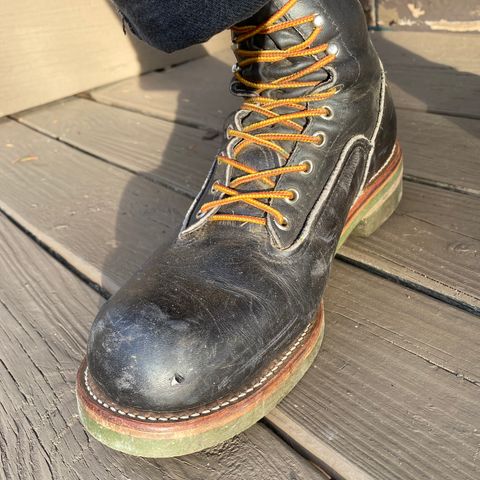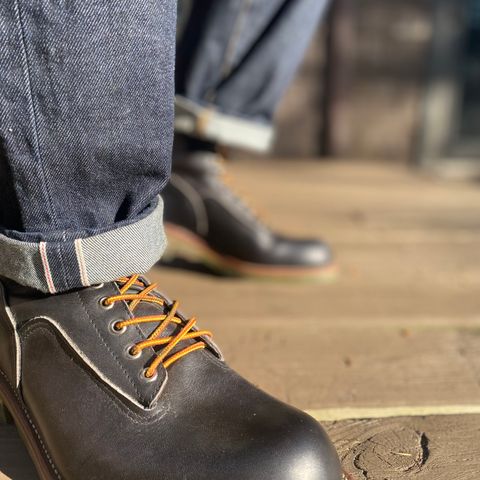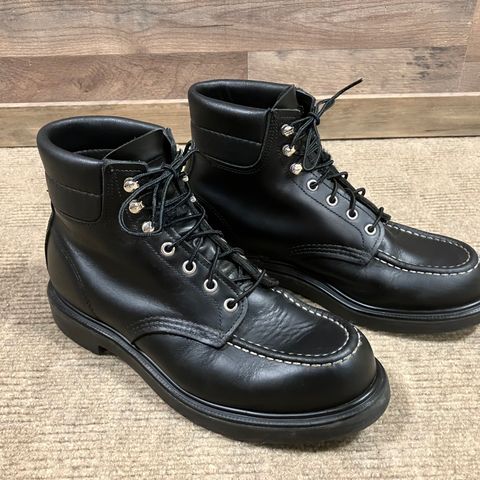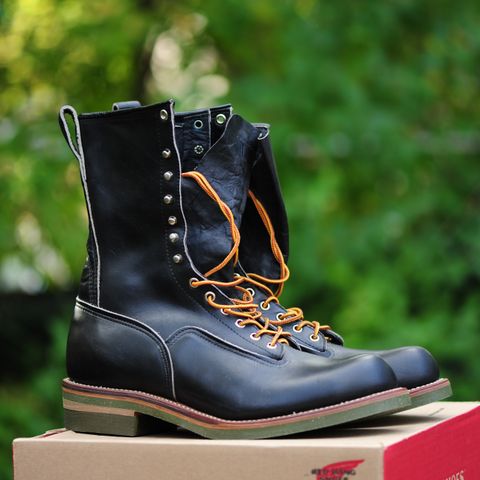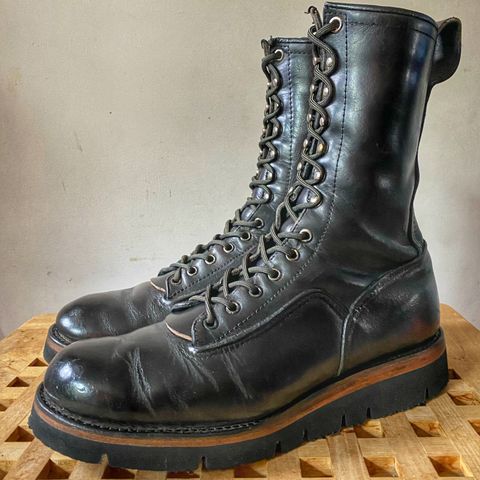About
S.B. Foot Chrome is a chrome-tanned leather produced by S.B. Foot Tanning Company in Red Wing, Minnesota. The leather starts as pre-processed hides that arrive in "wet blue" form, having been cured in chromium salts before further processing at S.B. Foot's facilities. Chrome tanning represents approximately 90% of all leather production globally and is characterized by its flexibility, durability, and water resistance compared to vegetable-tanned alternatives.
About
S.B. Foot Chrome is a chrome-tanned leather produced by S.B. Foot Tanning Company in Red Wing, Minnesota. The leather starts as pre-processed hides that arrive in "wet blue" form, having been cured in chromium salts before further processing at S.B. Foot's facilities. Chrome tanning represents approximately 90% of all leather production globally and is characterized by its flexibility, durability, and water resistance compared to vegetable-tanned alternatives.
S.B. Foot, operating since 1872 and a wholly owned subsidiary of Red Wing Shoes Company, Inc., has implemented high-exhaustion chrome tanning processes that reduce chromium salt usage by 33% while increasing chrome utilization from 70% to 98%. This environmental improvement has reduced chrome discharge waste from 3.8 kg/t to 0.05-0.1 kg/t.
Wet blue process
The term "wet blue" refers to hides that have been treated with basic chromium sulphate powder during the initial chrome tanning stage. At this point, the leather takes on a distinctive green-blue color and remains in a wet state. S.B. Foot purchases these pre-processed wet blue hides, which arrive having already undergone the initial chromium salt curing that converts raw hide into stable leather material.
The wet blue stage represents converted leather that can be stored for extended periods provided it does not dry out. This intermediate stage allows tanneries to maintain inventory and begin subsequent finishing operations when needed. The high-exhaustion tanning process used to create wet blue leather produces material that is highly stable, pliable, and durable.
Chrome tanning characteristics
Chrome-tanned leather exhibits several distinctive properties that differentiate it from vegetable-tanned alternatives. The material is softer and more flexible than vegetable-tanned leather, with water-resistant properties resulting from the chrome salt treatment. The tanning process can be completed in three to 24 hours, substantially faster than vegetable tanning which can require months.
The leather retains its color throughout its lifespan and can be dyed in virtually any color. Unlike vegetable-tanned leather, chrome-tanned material does not fade or develop a patina over time. For resistance to scuffs, impacts, and scratches, the strength of chrome leather lies in its softness, which allows the material to flex rather than mark when subjected to stress.
During the chrome tanning process, the pH of the material is raised to 3.8-4.0 during a step called basification, which induces cross-linking between the chromium and the collagen fibers in the hide. This chemical bonding creates the stable structure that provides chrome leather's characteristic durability and flexibility.
Environmental improvements
S.B. Foot Tanning Company has implemented high-exhaustion chrome tanning processes that significantly reduce environmental impact. These processes have decreased chromium salt usage by 33% while simultaneously increasing chrome utilization efficiency from 70% to 98%. The improved processes result in chrome discharge waste reduction from 3.8 kg per ton to 0.05-0.1 kg per ton.
The high-exhaustion method maximizes the uptake of chromium by the leather fibers, leaving minimal chromium in the processing wastewater. This advancement represents both environmental responsibility and process efficiency, as more of the chromium salt is utilized in the tanning process rather than discharged as waste.
Production and applications
S.B. Foot Tanning Company serves as the principal supplier of leather to Red Wing's shoe manufacturing plants. The tannery produces approximately 12 million square feet of leather annually, with chrome-tanned leather forming a significant portion of this output. Many of Red Wing's leathers undergo re-tanning processes with chrome tanning agents or combinations of chrome and vegetable tanning agents before dyeing and finishing.
The company has operated continuously since 1872, making it one of the few remaining American tanneries still in operation. S.B. Foot maintains two separate facilities approximately one mile apart in Red Wing, with the lower tannery handling initial hide processing and the upper tannery managing final coloring and finishing operations.
References
"Home". S.B. Foot Tanning Co. Retrieved October 12, 2025.
"Chrome Tanned Leather Guide: Pros & Cons vs Vegetable Tanning". Von Baer. Retrieved October 12, 2025.
"Chrome vs Vegetable Tanned Leather". Carryology. Retrieved October 12, 2025.
"Chrome Tanned Leather - Flexible, Colorful, and Popular". International Leather Club. Retrieved October 12, 2025.
"Tanning". Red Wing Shoes. Retrieved October 12, 2025.
"Difference Between Wet Blue and Wet White Leather". Gruppo DANI Tannery. Retrieved October 12, 2025.
